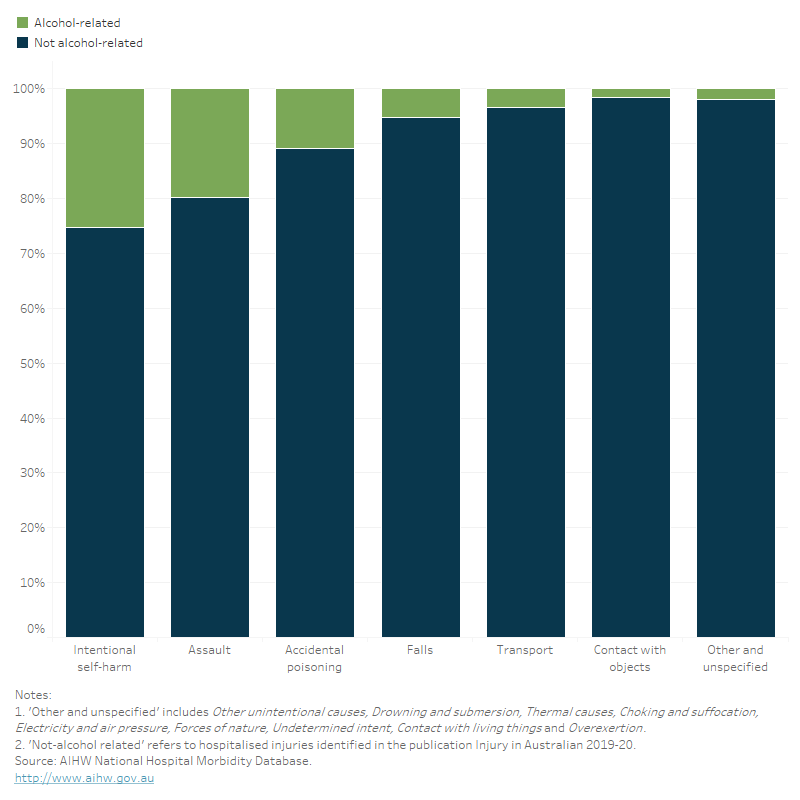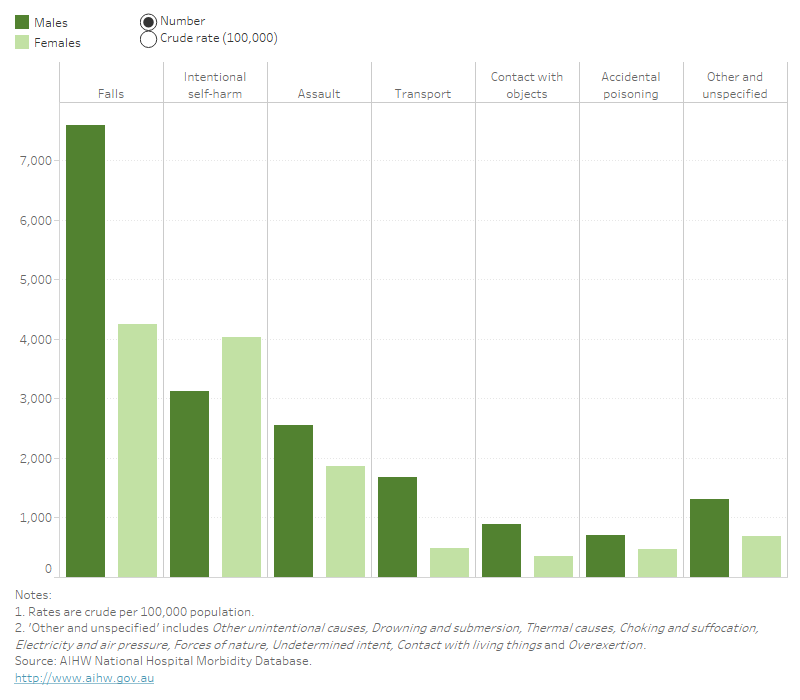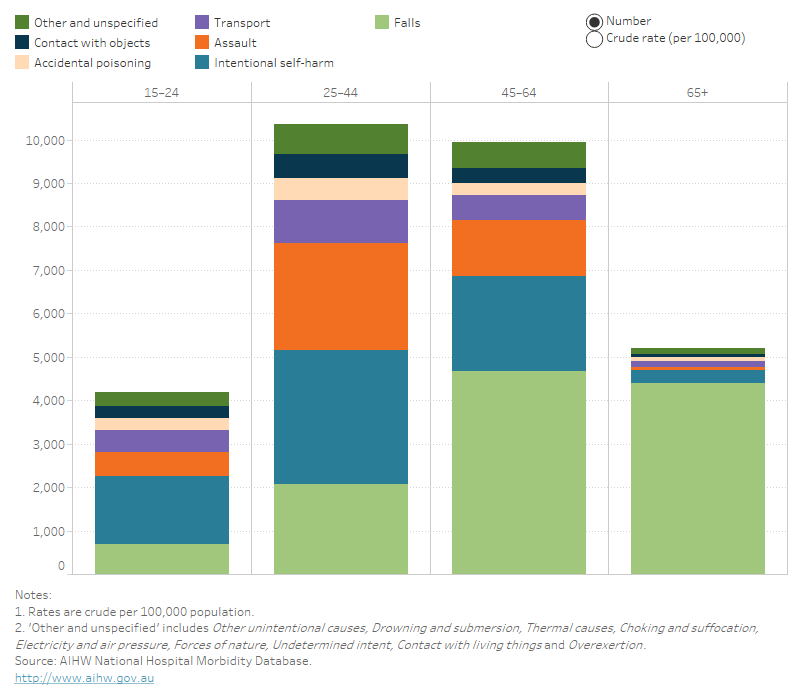What are the most common causes of alcohol-related injury?
The four most common causes of alcohol-related injury hospitalisations were falls (39%), intentional self-harm (24%), assault (15%) and transport (7.2%) (Figure 2). This is a different pattern to all injury hospitalisations, where intentional self-harm and assault play a smaller role compared to other causes.
One in 4 (25%) injury hospitalisations for intentional self-harm were alcohol-related, and 1 in 5 (20%) injury hospitalisations for assault were alcohol-related.
While 3.5% of all hospitalisations for transport injuries were alcohol-related, this is not necessarily an indication of drink-driving as the hospitalised person may not have been a driver – they could have been a car passenger, a pedestrian or a cyclist, for example.
Figure 2: Percentage of alcohol-related and all injury hospitalisations by selected cause, 2019–20
Stacked bar graph of the percentage of alcohol-related injuries by cause among all injuries showing that 1 in 4 intentional-self harm and 1 in 5 assault injury hospitalisations were alcohol-related.

Intentional self-harm was the only cause category where females were more likely (1.3 times as likely) to be hospitalised as males for an alcohol-related injury (Figure 3). The cause categories with the largest difference in rates between males and females were (Figure 3):
- transport crashes (male rate 3.5 times as high)
- thermal causes (male rate 2.8 times as high)
- contact with objects (male rate 2.6 times as high)
- contact with living things (male rate 2.3 times as high).
Figure 3: Number and rate of alcohol-related injury hospitalisations by selected causes and sex, 2019–20
Stacked bar graph showing that among alcohol-related injury hospitalisations, falls, intentional-self-harm and assault were the causes of injury with the highest number and rate. For all causes of injury except intentional self-harm, the crude rate was higher for males than females.

The rate of different causes of alcohol-related injury hospitalisations varies by age group (Figure 4):
- falls hospitalisation rates increased with age
- intentional self-harm rates decreased with age from the 15–24 age group onwards
- transport crashes rates were highest in the 15–24 age group
- assault rates were highest in the 25–44 age group.
These same patterns are found in injury hospitalisations data in general, both with and without the involvement of alcohol (AIHW 2022), showing that age has little bearing on whether an injury hospitalisation is alcohol-related or not. This is also reflected in the relatively small difference between crude and age-standardised rates by cause of injury.
Figure 4: Number and rate of alcohol-related injury hospitalisations by cause, sex and age group, 15 years and over, 2019–20
Stacked column graph showing the top causes of alcohol-related injury hospitalisations were intentional self-harm for those aged 15–44, and falls for those aged over 45.

For more detailed data, see Data tables A4–6.
AIHW (2022) Injury in Australia, AIHW, Australian Government, accessed 18 July 2022.


